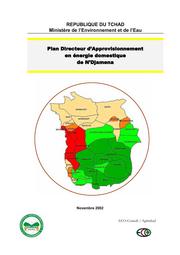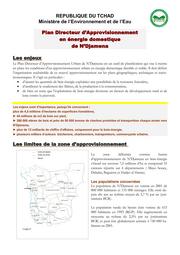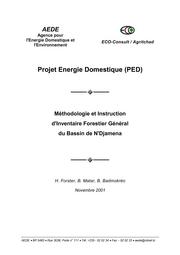Knowledge fuels change - Support energypedia!
For over 10 years, energypedia has been connecting energy experts around the world — helping them share knowledge, learn from each other, and accelerate the global energy transition.
Today, we ask for your support to keep this platform free and accessible to all.
Even a small contribution makes a big difference! If just 10–20% of our 60,000+ monthly visitors donated the equivalent of a cup of coffee — €5 — Energypedia would be fully funded for a whole year.
Is the knowledge you’ve gained through Energypedia this year worth €5 or more?
Your donation keeps the platform running, helps us create new knowledge products, and contributes directly to achieving SDG 7.
Thank you for your support, your donation, big or small, truly matters!
Difference between revisions of "Cooking Energy Intervention Strategies"
***** (***** | *****) |
***** (***** | *****) m |
||
| (9 intermediate revisions by 7 users not shown) | |||
| Line 1: | Line 1: | ||
| + | [[File:GIZ HERA Cooking Energy Compendium small.png|left|831px|GIZ HERA Cooking Energy Compendium|alt=GIZ HERA Cooking Energy Compendium small.png|link=GIZ HERA Cooking Energy Compendium]]<br/><br/><!-- | ||
| − | + | -->{{#ifeq: {{#show: {{PAGENAME}} |?Hera category}} | Cooking Energy System |'''[[GIZ HERA Cooking Energy Compendium#Cooking Energy Technologies and Practices|Cooking Energy System]]''' {{!}} | [[GIZ HERA Cooking Energy Compendium#Cooking Energy Technologies and Practices|Cooking Energy System]] {{!}} | }} <!-- | |
| + | -->{{#ifeq: {{#show: {{PAGENAME}} |?Hera category}} | Basics |'''[[GIZ HERA Cooking Energy Compendium#Basics about Cooking Energy|Basics]]''' {{!}} | [[GIZ HERA Cooking Energy Compendium#Basics about Cooking Energy|Basics]] {{!}} | }} <!-- | ||
| + | -->{{#ifeq: {{#show: {{PAGENAME}} |?Hera category}} | Policy Advice |'''[[GIZ HERA Cooking Energy Compendium#Policy Advice on Cooking Energy|Policy Advice]]''' {{!}} | [[GIZ HERA Cooking Energy Compendium#Policy Advice on Cooking Energy|Policy Advice]] {{!}} | }} <!-- | ||
| − | + | -->{{#ifeq: {{#show: {{PAGENAME}} |?Hera category}} | Planning |'''[[GIZ HERA Cooking Energy Compendium#Planning Cooking Energy Interventions|Planning]]''' {{!}} | [[GIZ HERA Cooking Energy Compendium#Planning Cooking Energy Interventions|Planning]] {{!}} | }} <!-- | |
| − | + | -->{{#ifeq: {{#show: {{PAGENAME}} |?Hera category}} | ICS Supply |'''[[GIZ HERA Cooking Energy Compendium#Designing and Implementing Improved Cookstoves .28ICS.29 Supply Interventions|Designing and Implementing ICS Supply]]''' {{!}} | [[GIZ HERA Cooking Energy Compendium#Designing and Implementing Improved Cookstoves .28ICS.29 Supply Interventions|Designing and Implementing ICS Supply]] {{!}} | }} <!-- | |
| − | + | -->{{#ifeq: {{#show: {{PAGENAME}} |?Hera category}} | Woodfuel Supply |'''[[GIZ HERA Cooking Energy Compendium#Designing and Implementing Woodfuel Supply Interventions|Designing and Implementing Woodfuel Supply]]''' {{!}} | [[GIZ HERA Cooking Energy Compendium#Designing and Implementing Woodfuel Supply Interventions|Designing and Implementing Woodfuel Supply]] {{!}} | }} <!-- | |
| − | + | -->{{#ifeq: {{#show: {{PAGENAME}} |?Hera category}} | Climate Change |'''[[GIZ HERA Cooking Energy Compendium#Climate Change Related Issues|Climate Change]]''' | [[GIZ HERA Cooking Energy Compendium#Climate Change Related Issues|Climate Change]] {{!}} | }} <!-- | |
| − | + | -->{{#ifeq: {{#show: {{PAGENAME}} |?Hera category}} | Extra |'''[[GIZ HERA Cooking Energy Compendium#Climate Change Related Issues|Extra]]''' | [[GIZ HERA Cooking Energy Compendium#Climate Change Related Issues|Extra]] }} | |
| − | + | <br/> | |
| + | |||
| + | = Overview = | ||
| + | |||
| + | In light of rising costs for fossil fuels (at least during past decades) and their negative impact on climate as well as in light of unavailibility of electricity, woodfuel will remain important in the energy mix of many countries struggling to meet an ever growing demand, for several decades to come. Consequently, there is a need for national energy policies to include a component on wood-based fuel. Ideally, developing such strategies is a systematic and ongoing process comprising stakeholder consultation, participation, and capacity-building down to local level. The ultimate goal is to identify actions and assign responsibilities and timeframes for their implementation. High-level decision-making of all relevant ministries (energy/ forestry/ environment/ agriculture etc.) is needed to establish rules and laws that provide supportive conditions for the development and use of woodfuel resources. | ||
| + | |||
| + | = Strategies - Summary = | ||
| + | |||
| + | The '''[http://www.euei-pdf.org/thematic-studies/biomass-energy-strategy-best-guide-i Biomass Energy Strategy (BEST) Initiative]''' is one example in this process. BEST is a joint initiative between the '''[http://www.euei-pdf.org/ EUEI Partnership Dialogue Facility (PDF)]''' and GIZ programme for '''[http://www.giz.de/fachexpertise/html/2769.html Basic Energy Services (HERA)]''' (both implemented on behalf of BMZ, The Federal German Ministry for Economic Cooperation and Development). The initiative supports African governments in developing national biomass energy strategies and aims at building awareness of biomass energy as the main source of primary energy in Africa and thereby, its role in poverty alleviation.<br/> | ||
| + | |||
| + | BESTs have been developed by the Governments of Botswana, Ethiopia, Lesotho, Malawi, Mozambique, Rwanda, Tanzania and Zambia. The BEST Initiative has also developed a [[:File:Best-guide-07-08-08.pdf|National Biomass Energy Strategy Guide]] to provide a development focus for policy-makers, energy and forestry planners.<br/> | ||
| + | |||
| + | For the Sahel region of West-Africa, the [http://www.cilss.bf/ CILSS] (Permanent Inter State Committee for Drought Control in the Sahel) based project PRE has published a similar guide for developing ‘[[:File:Guide elaboration sed.pdf|National domestic energy strategies]]’. The different steps recommended in the guide follow a more structured approach based on the ‘Fuelwood Market Scheme’ launched in Niger, Mali and Chad during the late 1990s. Currently all CILSS member countries possess ‘National domestic energy strategies’.<br/> | ||
| − | + | Any new strategy should complement existing woodfuel-related strategies and facilitate the efficient implementation of existing policies. Political commitment and ownership of the strategy by high level decision makers should be part of the overarching strategy development exercise.<br/> | |
| − | + | Software modeling tools can be useful in evaluating different scenarios' impact and cost/benefit. One such example is [http://www.energycommunity.org/default.asp?action=47 LEAP], the Long Range Energy Alternatives Planning System, a widely-used software tool for energy policy analysis and climate change mitigation assessment, which was developed at the Stockholm Environment Institute.<br/> | |
| − | They assess: | + | It is also now common practice in cities of such countries as Mali, Niger, and Chad, to develop '''Woodfuel supply master plans (WSMP) '''to support the sustainable supply with woodfuel. The WSMP are based on forest resource inventories in the woodfuel catchment areas of each city, complemented by socio-economic studies.<br/> |
| − | #available woody resources (estimated areas, standing stocks and yields) | + | |
| − | #prevailing woodfuel flows, describing the main woodfuel supply chains and the current woodfuel harvesting and charcoal-making areas at the local level | + | <u>They assess:</u><br/> |
| − | #human dynamics (history, demography and migrations, main land-based activities, etc.) The WSMP highlights the geographic priority areas and gives strategic guidelines for implementation. During the WSMP development process, all relevant stakeholders are involved, and their approval (technical as well as political) is solicited during a final workshop. | + | |
| + | #available woody resources (estimated areas, standing stocks and yields)<br/> | ||
| + | #prevailing woodfuel flows, describing the main woodfuel supply chains and the current woodfuel harvesting and charcoal-making areas at the local level<br/> | ||
| + | #human dynamics (history, demography and migrations, main land-based activities, etc.) The WSMP highlights the geographic priority areas and gives strategic guidelines for implementation. During the WSMP development process, all relevant stakeholders are involved, and their approval (technical as well as political) is solicited during a final workshop.<br/> | ||
<br/> | <br/> | ||
| − | Additional information on WSMPs can be accessed (in French only) through: | + | = Further Information = |
| + | |||
| + | *[[Portal:Improved Cooking|Improved Cooking Portal on energypedia]] | ||
| + | |||
| + | <u>Additional information on WSMPs can be accessed (in French only) through:</u> | ||
| − | {| | + | {| style="width: 100%" align="center" cellspacing="1" cellpadding="1" border="1" |
|- | |- | ||
| [[File:Rapport pda-small.pdf|180px|RTENOTITLE]] | | [[File:Rapport pda-small.pdf|180px|RTENOTITLE]] | ||
| Line 46: | Line 68: | ||
<br/> | <br/> | ||
| − | + | = References = | |
| − | + | This article was originally published by [http://www.giz.de/fachexpertise/html/2769.html GIZ HERA]. It is basically based on experiences, lessons learned and information gathered by GIZ cook stove projects. You can find more information about the authors and experts of the original “Cooking Energy Compendium” in the [[Imprint - GIZ HERA Cooking Energy Compendium|Imprint]]. | |
| − | |||
| − | |||
| − | This article was originally published by [http://www.giz.de/ | ||
<references /> | <references /> | ||
<br/>[[GIZ HERA Cooking Energy Compendium|--> Back to Overview GIZ HERA Cooking Energy Compendium]] | <br/>[[GIZ HERA Cooking Energy Compendium|--> Back to Overview GIZ HERA Cooking Energy Compendium]] | ||
| + | |||
| + | {{#set: Hera category=Policy Advice}} | ||
[[Category:Cooking_Energy_Compendium_(GIZ_HERA)]] | [[Category:Cooking_Energy_Compendium_(GIZ_HERA)]] | ||
| + | [[Category:Improved_Cooking]] | ||
[[Category:Cooking_Energy]] | [[Category:Cooking_Energy]] | ||
Latest revision as of 12:54, 30 April 2018
Cooking Energy System | Basics | Policy Advice | Planning | Designing and Implementing ICS Supply | Designing and Implementing Woodfuel Supply | Climate Change | Extra
Overview
In light of rising costs for fossil fuels (at least during past decades) and their negative impact on climate as well as in light of unavailibility of electricity, woodfuel will remain important in the energy mix of many countries struggling to meet an ever growing demand, for several decades to come. Consequently, there is a need for national energy policies to include a component on wood-based fuel. Ideally, developing such strategies is a systematic and ongoing process comprising stakeholder consultation, participation, and capacity-building down to local level. The ultimate goal is to identify actions and assign responsibilities and timeframes for their implementation. High-level decision-making of all relevant ministries (energy/ forestry/ environment/ agriculture etc.) is needed to establish rules and laws that provide supportive conditions for the development and use of woodfuel resources.
Strategies - Summary
The Biomass Energy Strategy (BEST) Initiative is one example in this process. BEST is a joint initiative between the EUEI Partnership Dialogue Facility (PDF) and GIZ programme for Basic Energy Services (HERA) (both implemented on behalf of BMZ, The Federal German Ministry for Economic Cooperation and Development). The initiative supports African governments in developing national biomass energy strategies and aims at building awareness of biomass energy as the main source of primary energy in Africa and thereby, its role in poverty alleviation.
BESTs have been developed by the Governments of Botswana, Ethiopia, Lesotho, Malawi, Mozambique, Rwanda, Tanzania and Zambia. The BEST Initiative has also developed a National Biomass Energy Strategy Guide to provide a development focus for policy-makers, energy and forestry planners.
For the Sahel region of West-Africa, the CILSS (Permanent Inter State Committee for Drought Control in the Sahel) based project PRE has published a similar guide for developing ‘National domestic energy strategies’. The different steps recommended in the guide follow a more structured approach based on the ‘Fuelwood Market Scheme’ launched in Niger, Mali and Chad during the late 1990s. Currently all CILSS member countries possess ‘National domestic energy strategies’.
Any new strategy should complement existing woodfuel-related strategies and facilitate the efficient implementation of existing policies. Political commitment and ownership of the strategy by high level decision makers should be part of the overarching strategy development exercise.
Software modeling tools can be useful in evaluating different scenarios' impact and cost/benefit. One such example is LEAP, the Long Range Energy Alternatives Planning System, a widely-used software tool for energy policy analysis and climate change mitigation assessment, which was developed at the Stockholm Environment Institute.
It is also now common practice in cities of such countries as Mali, Niger, and Chad, to develop Woodfuel supply master plans (WSMP) to support the sustainable supply with woodfuel. The WSMP are based on forest resource inventories in the woodfuel catchment areas of each city, complemented by socio-economic studies.
They assess:
- available woody resources (estimated areas, standing stocks and yields)
- prevailing woodfuel flows, describing the main woodfuel supply chains and the current woodfuel harvesting and charcoal-making areas at the local level
- human dynamics (history, demography and migrations, main land-based activities, etc.) The WSMP highlights the geographic priority areas and gives strategic guidelines for implementation. During the WSMP development process, all relevant stakeholders are involved, and their approval (technical as well as political) is solicited during a final workshop.
Further Information
Additional information on WSMPs can be accessed (in French only) through:

|
||
| Woodfuel supply master plan (N’Djamena/Chad) | Exerpt from the Woodfuel supply master plan (N’Djamena/Chad)destined for decision-makers |
Manual to conduct forest inventories of woodfuel catchment areas |
References
This article was originally published by GIZ HERA. It is basically based on experiences, lessons learned and information gathered by GIZ cook stove projects. You can find more information about the authors and experts of the original “Cooking Energy Compendium” in the Imprint.






















